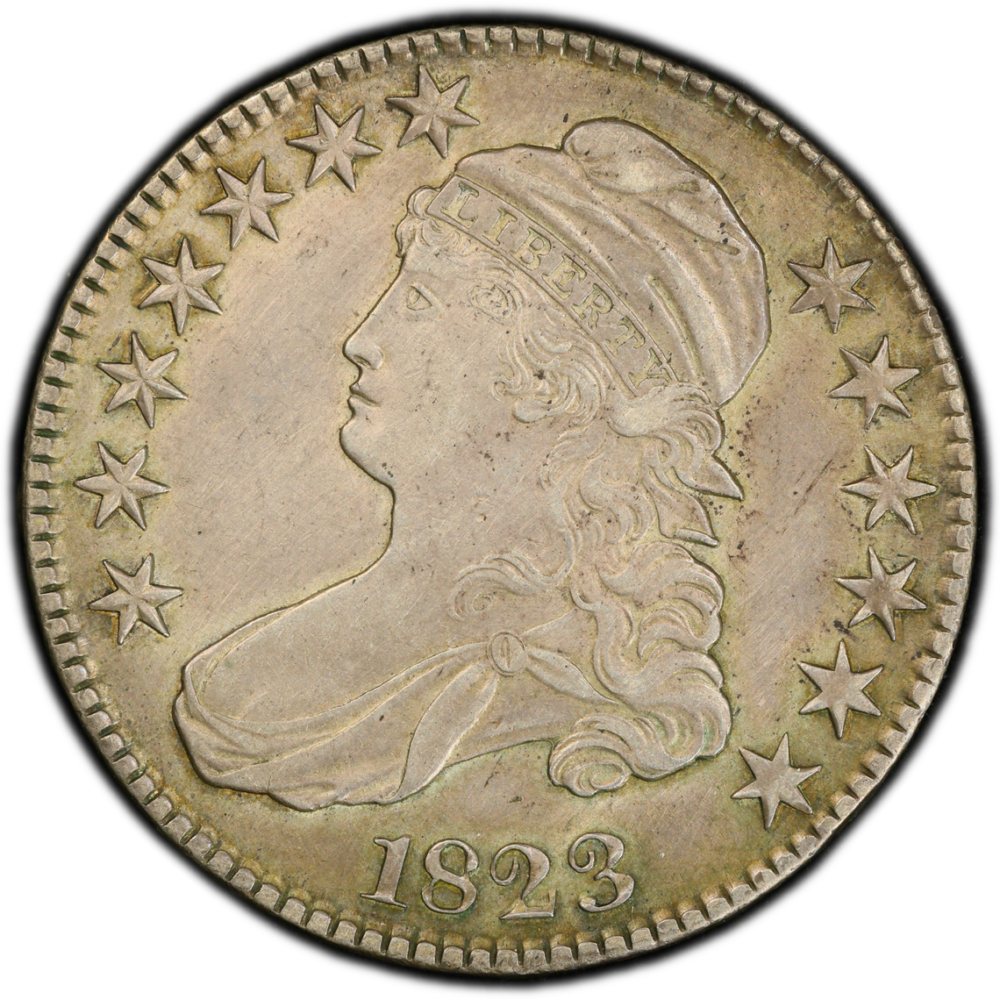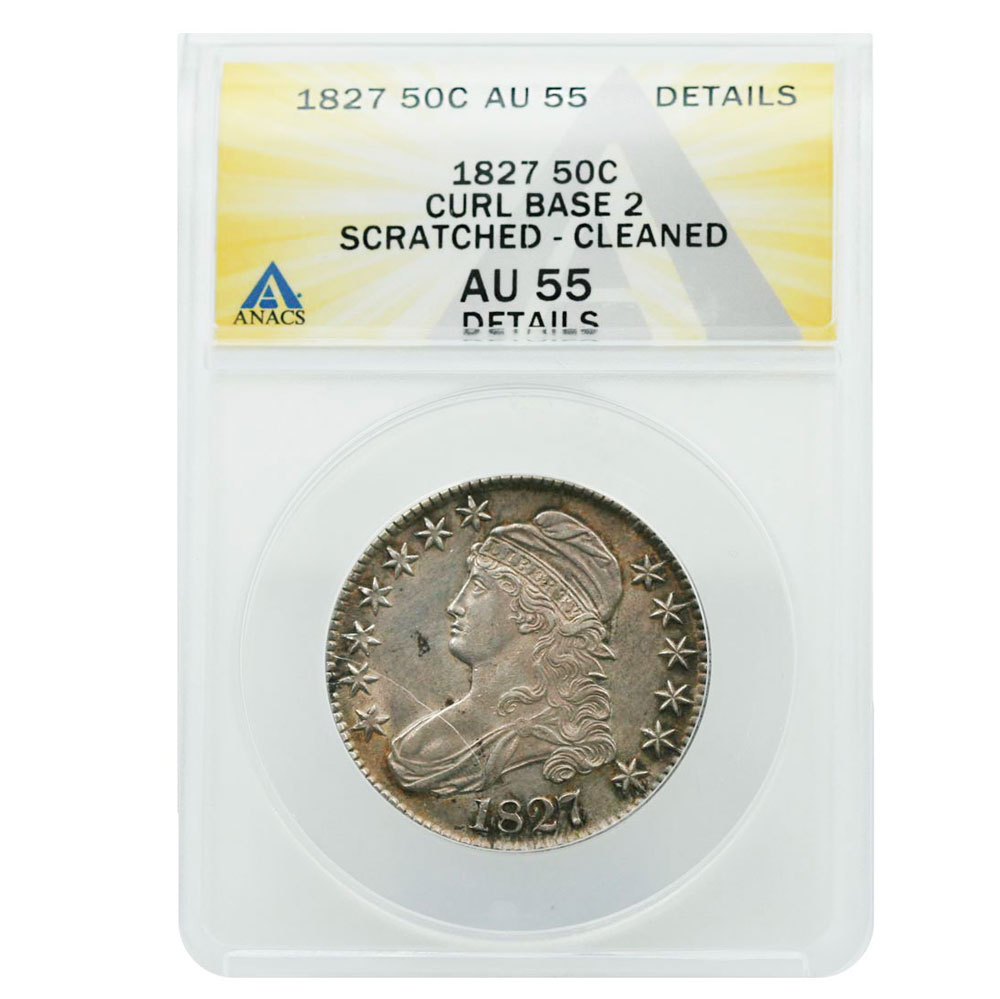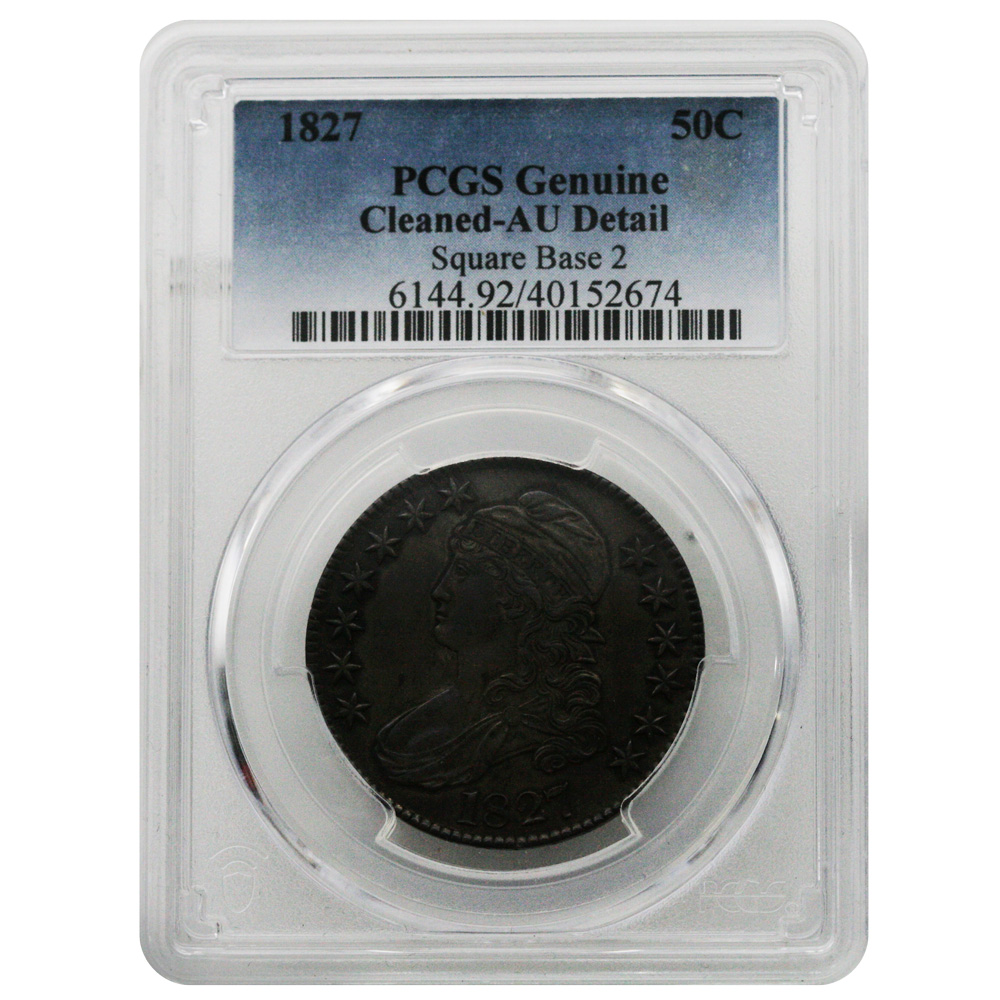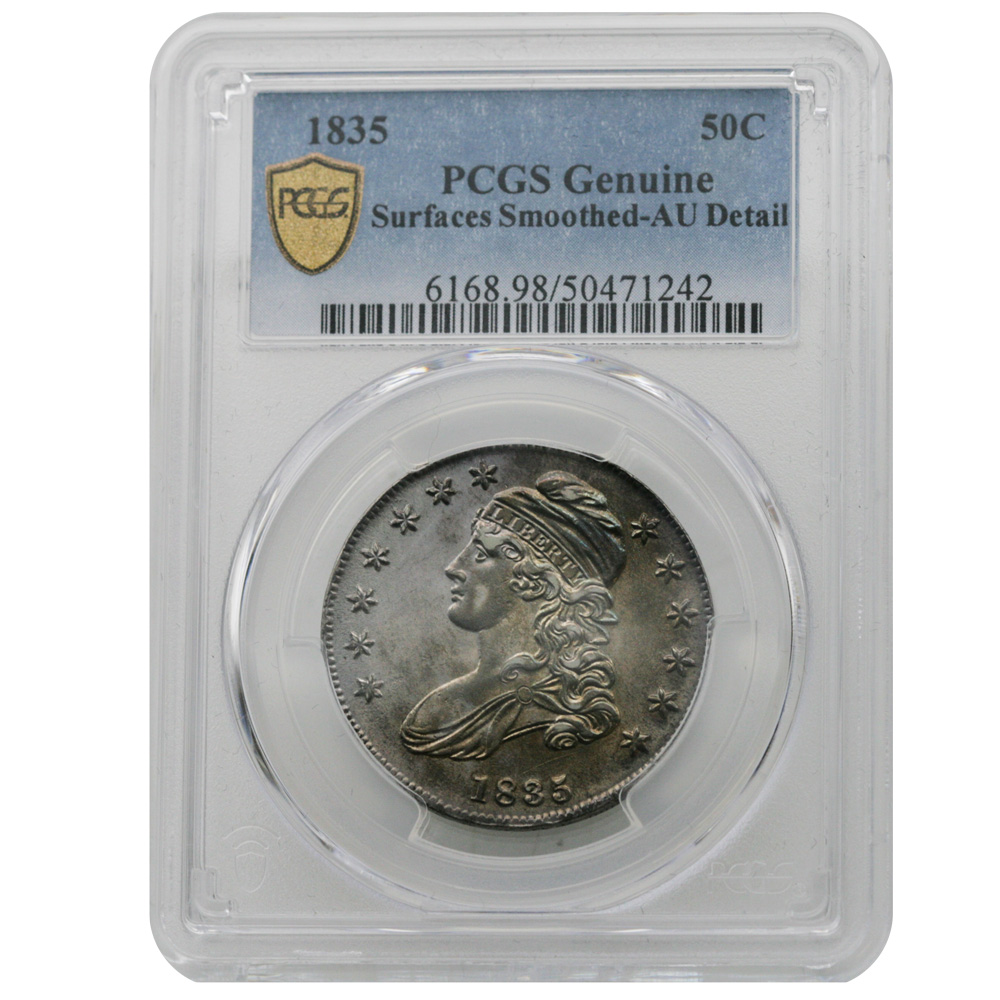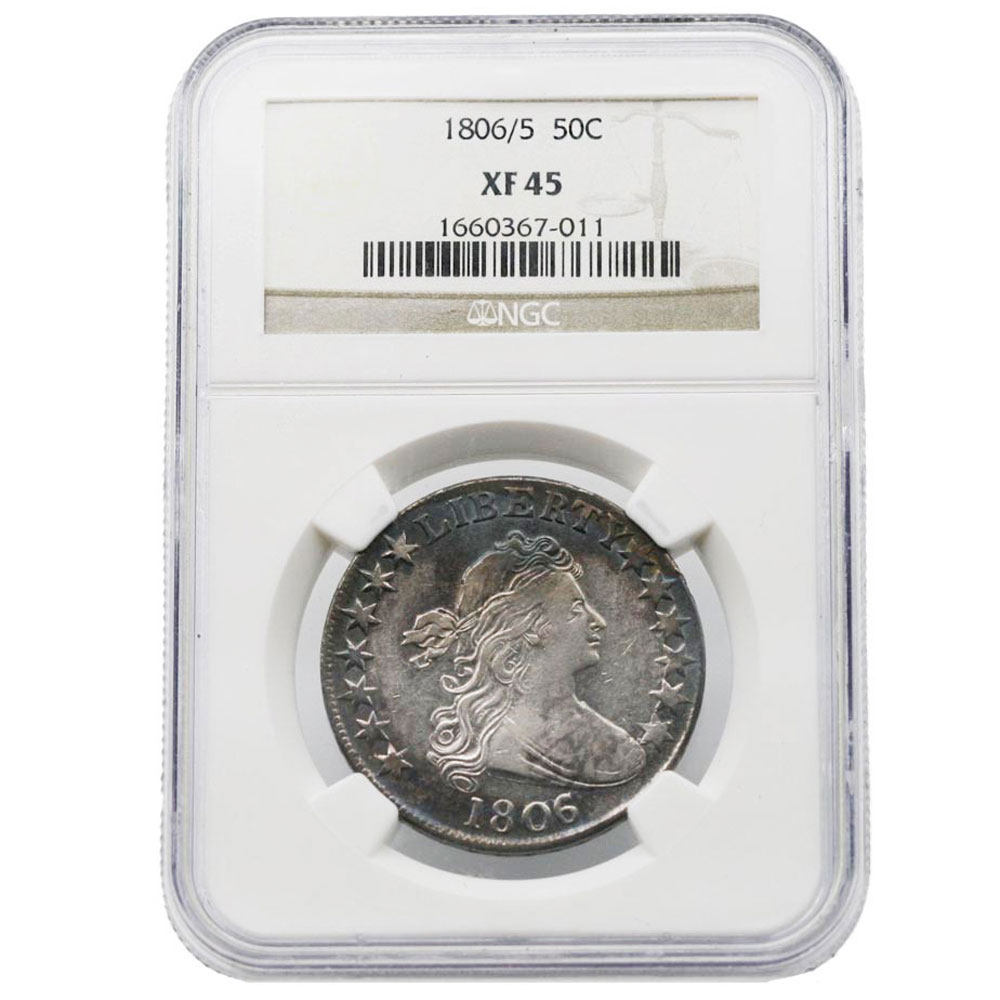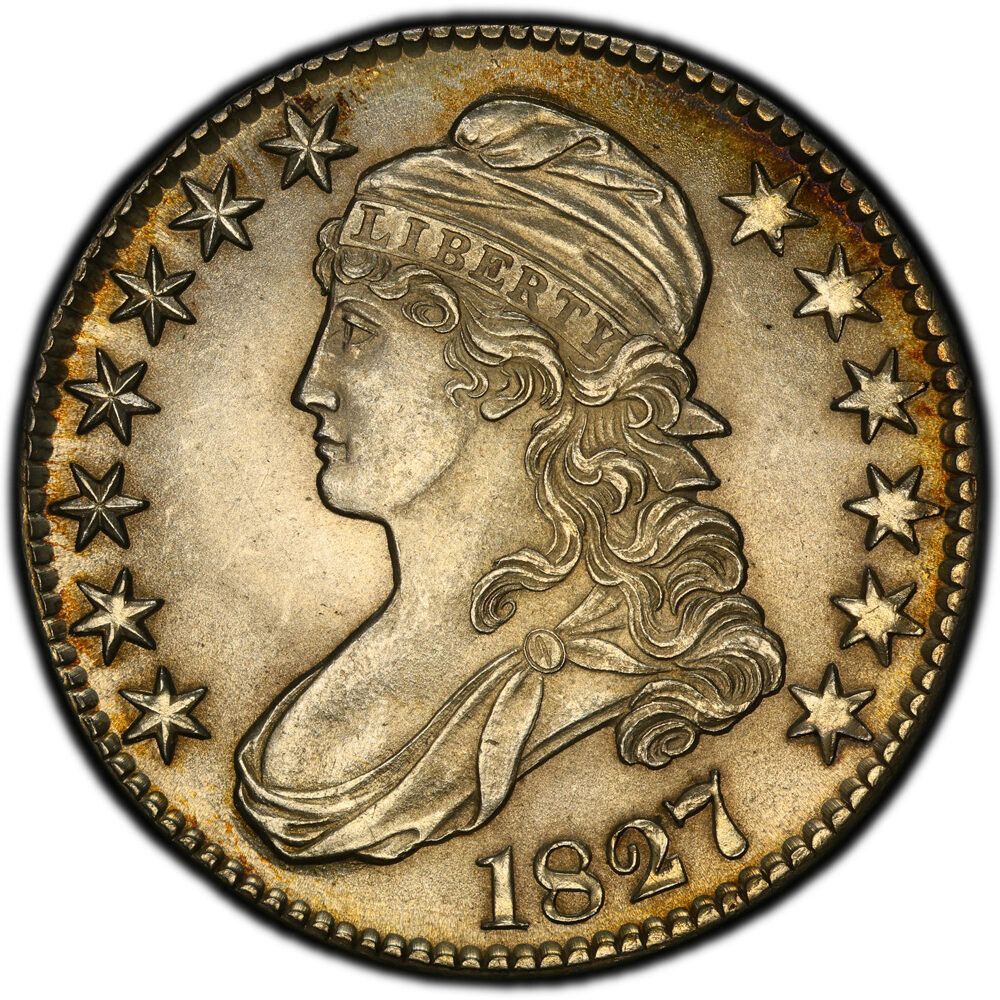Early Half Dollars (1794-1836)
Introduction
The Early Half Dollars represent one of the most historically rich and collectible U.S. coin series. Produced from 1794 to 1836, they were struck at a time when the young U.S. Mint was still experimenting with design, technology, and mass production. These coins are large (32–33 mm), struck in 89.24% silver (with copper balance), and were essential for commerce in early America. Because of their age, low mintages, and survival rates, early half dollars are a cornerstone for advanced U.S. collectors.
Flowing Hair (1794–1795)
The very first half dollars issued by the U.S. Mint. Designed by Robert Scot, the obverse depicts Liberty with flowing hair, while the reverse shows a small eagle in a wreath. Struck in extremely limited numbers, these are rare in all grades.
Draped Bust (1796–1807)
The portrait of Liberty was refined with a draped bust, based on a sketch by Gilbert Stuart. Early issues (1796–1797) used the Small Eagle reverse, making them legendary rarities. From 1801 onward, the reverse changed to the Heraldic Eagle, modeled after the Great Seal.
Capped Bust (1807–1836)
Designed by John Reich, the Capped Bust introduced a more natural Liberty wearing a cap. The reverse shows a powerful eagle with a shield. These coins were produced in large numbers compared to earlier types, and collectors today love them for their variety-rich die marriages cataloged in the Overton reference.
Collector Appeal
Early Half Dollars attract collectors for their history, size, and artistry. Specialists often pursue die marriages and varieties (particularly in the Capped Bust series, where each die pairing is tracked and catalogued). Type collectors often seek one representative of each design—Flowing Hair, Draped Bust, and Capped Bust—but high-grade or problem-free examples are scarce across the board.
Because many circulated heavily in early commerce, Mint State examples are rare and command high premiums. Coins with attractive toning, strong strikes, and original surfaces are especially prized today.

